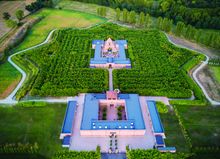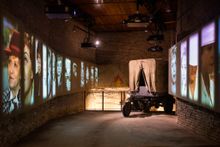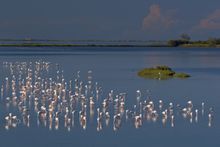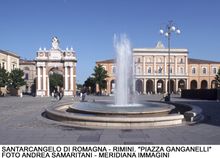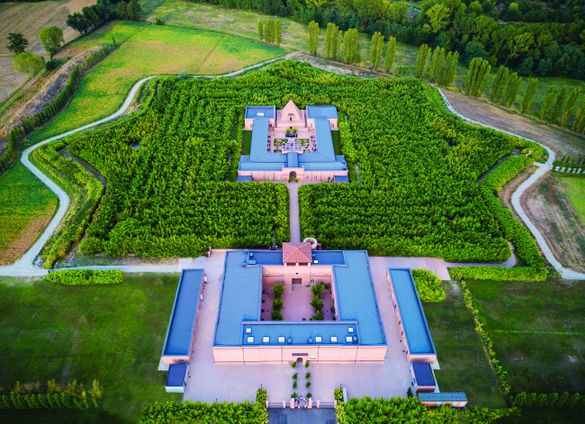 27 Jul 2022
27 Jul 2022
Off the beaten track, the northern Italian region of Emilia Romagna offers a wide variety of quirky attractions and hidden gems for visitors looking to step beyond the usual 'must see' places on their summer and autumn breaks. From a seven-hectare bamboo labyrinth to Italy's only Tibetan monastery, these are less predictable but peculiar attractions worth adding to your next trip.
Emilia Romagna's top 10 quirkiest attractions are:
- Labirinto della Masone - Fontanellato (Parma)
The Labirinto della Masone is the largest bamboo labyrinth in the world – made with 200,000 bamboo plants between 30 cm and 15 metres in height. The path through it is over 3 kilometres in length. It was first conceived and created by Franco Maria Ricci, an Italian art publisher and magazine editor. Within the connected building, visitors can find an art collection, a restaurant, and two suites to spend the night. Ricci's extraordinary personal art collection, amassed over 50 years, includes Napoleonic busts, mannerist works, paintings spanning the 17th to 19th centuries, original illustrations of Luigi Serafini's Codex Seraphinianu and a wooden model of Milan's Duomo.
https://www.labirintodifrancomariaricci.it/en/labirinto-masone/labyrinth/#section0
- Underground Santarcangelo – Santarcangelo di Romagna (Rimini)
The village of Santarcangelo di Romagna, located 10km west of the seaside town of Rimini, is an idyllic medieval town featuring an ancient castle, charming alleyways, triumphant arches and a variety of restaurants. However, lurking below ground, a patchwork of caves, galleries and tunnels dug from the sandstone and clay unravels below, hide secret escape routes, ice boxes, granaries and at least 150 caves. This mysterious parallel city was used in the Middle Ages, some say to ensure survival during months-long sieges (grain, wine and perishable food storage is abundant in the concealed underground world), though its actual construction date and purpose remains a mystery unsolved.
https://emiliaromagnaturismo.it/en/towns/santarcangelo-di-romagna
- Tibet House - Votigno di Canossa (Reggio Emilia)
In the sleepy stone village of Votigno di Canossa, 24km southwest of Reggio Emilia, visitors can find Europe's first (and Italy's only) Tibetan monastery. Inaugurated by the Dalai Lama in 1990, the complex includes a Tibetan temple, museum and B&B. The clustered village of brown and gray-shaded bricks dates to the 11th century, when Matilda of Tuscany (aka Matilda of Canossa) ruled these parts from the nearby castle, and the fortified village once offered safe haven for soldiers (its tallest building is a watchtower). The village is often used for re-enactments of life in the Middle Ages and it counts a life-size black-and-white chessboard and numerous Buddha statues and Tibetan cultural paraphernalia among its oddities. It's a quiet and quirky place for contemplation nestled among the enchanting green hills of Reggio Emilia.
https://emiliaromagnaturismo.it/en/towns/canossa
- Casa di Lucio Dalla – Bologna
Lucio Dalla was a very popular Italian singer and songwriter who spent five decades in the music industry. Despite passing away in 2012, Dalla is still one of Italy's most famous and beloved musicians Visitors can now familiarise themselves with the eccentric entertainer by visiting his home-turned-museum in Bologna's historic city centre. His house, inside the 15th century Palazzo Casa Fontana poi Gamberini, offers visitors a unique glimpse into the mind of the musical Italian genius. Dallas lived in this house between 1993 until his death and amassed an extraordinary collection of art. Highlights include numerous 18th-century Neapolitan nativity scenes and many provocative works – see to believe.
http://www.fondazioneluciodalla.it/
- The Po Delta Park - Ferrara
Po Delta Park is one of the most beautiful oases in Italy and the second largest wetland in Europe. Here, the Po river splits just before reaching the sea, creating a multitude of streams and small isles. The UNESCO-listed area provides lagoons, woods, small islands, flocks of pink flamingos, fishermen's huts and exceptional biodiversity make it a paradise for birdwatchers. Due to its peculiar position - along one of the three migratory routes used by birds between Europe and Africa - the Po Delta Park hosts 300 different bird species. Visitors can enjoy a relaxing weekend and do activities including bout tours and wine tasting.
https://emiliaromagnaturismo.it/en/nature-outdoor/natural-parks/po-delta-park
- Little Venice – Comacchio (Ferrara)
The small village of Comacchio rises in the middle of a lagoon of the same name and was originally built by joining 13 small islands formed at the mouth of the Po River with the sea. This 'little Venice' is today characterised by a historical centre crossed by a dense network of canals – hence the nickname of 'the floating city'. Comacchio is very popular for birdwatchers and its “Pickling Factory” museum offers a chance to learn about the economic and gastronomic history of the city. The tranquil surroundings and the calmness of the valleys mean that late summer and autumn it is one of the best seasons to appreciate the landscapes and metaphysical atmosphere. Not to be missed is the Comacchio Eel Festival, which is usually held every year in the months of September/October.
https://www.travelemiliaromagna.it/en/visit-comacchio/
- Hunting for truffles with dogs - Romagna
Visitors can a real opportunity to into the woods and hunt truffles with a local truffle hunter and dog in Emilia Romagna. Autumn is the best season to hunt for these underground mushrooms, and are a staple ingredient in a number of dishes from Emilia Romagna, such as the classic cheese stuffed pappardelle with crème and black truffle. The specially trained dogs that come along with guests are used to search for the familiar aroma of truffle. Although they are rare to find, hence their market value, they grow close to the surface and their characteristic smell makes them easier to find. A quirky and fun activity to add to your next trip.
http://www.yeptourevent.it/y/tour/a-trufflehunt.php
- Terme di Salsomaggiore – Parma
Salsomaggiore Terme is a special town just an hour from Parma, as it is home to one of Italy's most famous spa facilities. Salsomaggiore Terme is a popular spa town due to its naturally salty thermal springs, which are used to prevent and treat host of health problems. These waters were renowned as early as Roman times and since 1839 have been consistently used in body and wellness treatments. Salsomaggiore is an ideal destination for those looking for a taste of wellbeing and relaxation. The town offers a number of spas, and the Terme di Salsomaggiore comprises of two parts: the Terme Zoja for spa treatments, and the Berzieri facility, a stunning Liberty-style building housing a modern wellness centre. The star attraction of all the treatments available at this spa is the distinctive, rust-coloured sodium chloride, bromide and iodide-rich water with health benefits to treat a variety of disorders.
https://emiliaromagnaturismo.it/en/spa-wellness/thermal-establishments/terme-di-salsomaggiore
- Federico Fellini International Museum - Rimini
The Federico Fellini International Museum is the world's largest museum devoted to the life and work of the Italian film director and screenwriter and his poetic heritage. Visitors can find drawings, costumes, exhibitions, film showings, scenographic elements and multimedia presentations that allow guests to immerse themselves in the world of Fellini, regarded as one of the most influential filmmakers of the 20th century. The museum occupies Rimini's Renaissance Sismondo Castle, the upper floors of the city's art-nouveau Cinema Fulgor (attended by Fellini) and the 'Square of Dreams' - a 400 metres of outdoor space between them, in which distinctive video installations, augmented reality and pop ups are installed.
https://www.fellinimuseum.it/en/
- Este Castle of Mesola - Ferrara
Este Castle of Mesola was built in the 16th century by order of the last Duke of Ferrara, Alfonso II. It was the last of the so-called “delizie” (delights) of the Este family. It was meant to provide hospitality for the court during the hunting season, but the entire complex was surrounded by fortification walls with towers. The castle, which stood on the western side of the entire complex, still dominates the village of Mesola with its four elegant-shaped towers. Nowadays, the castle is home to the Municipal Library, the Historic Archive and the Civic Art Gallery, which houses regular exhibitions of contemporary art.
For further information on Emilia Romagna, please visit www.emiliaromagnaturismo.it/en

